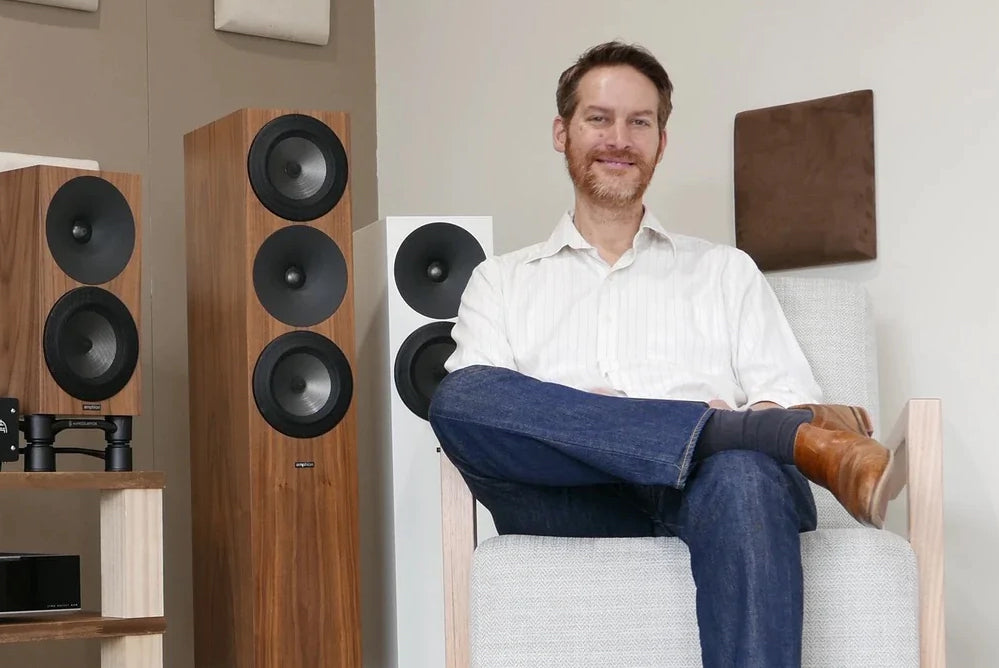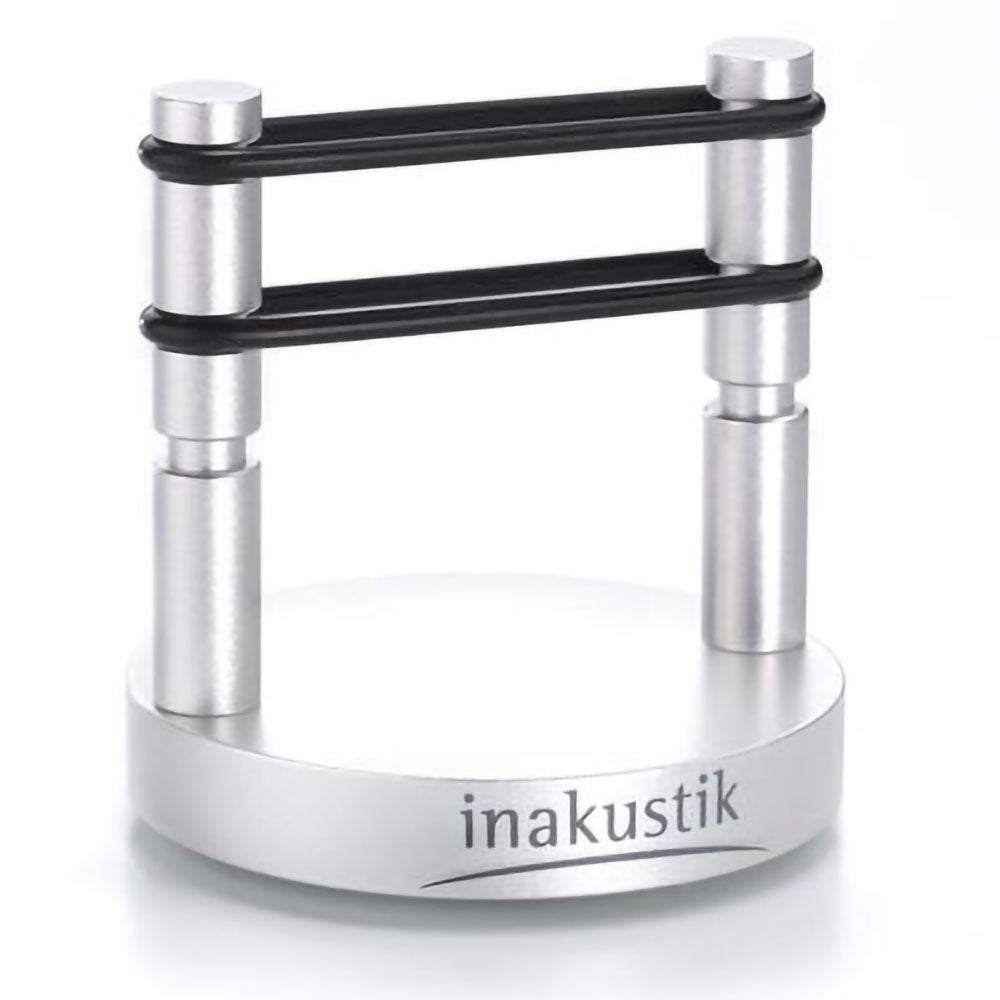

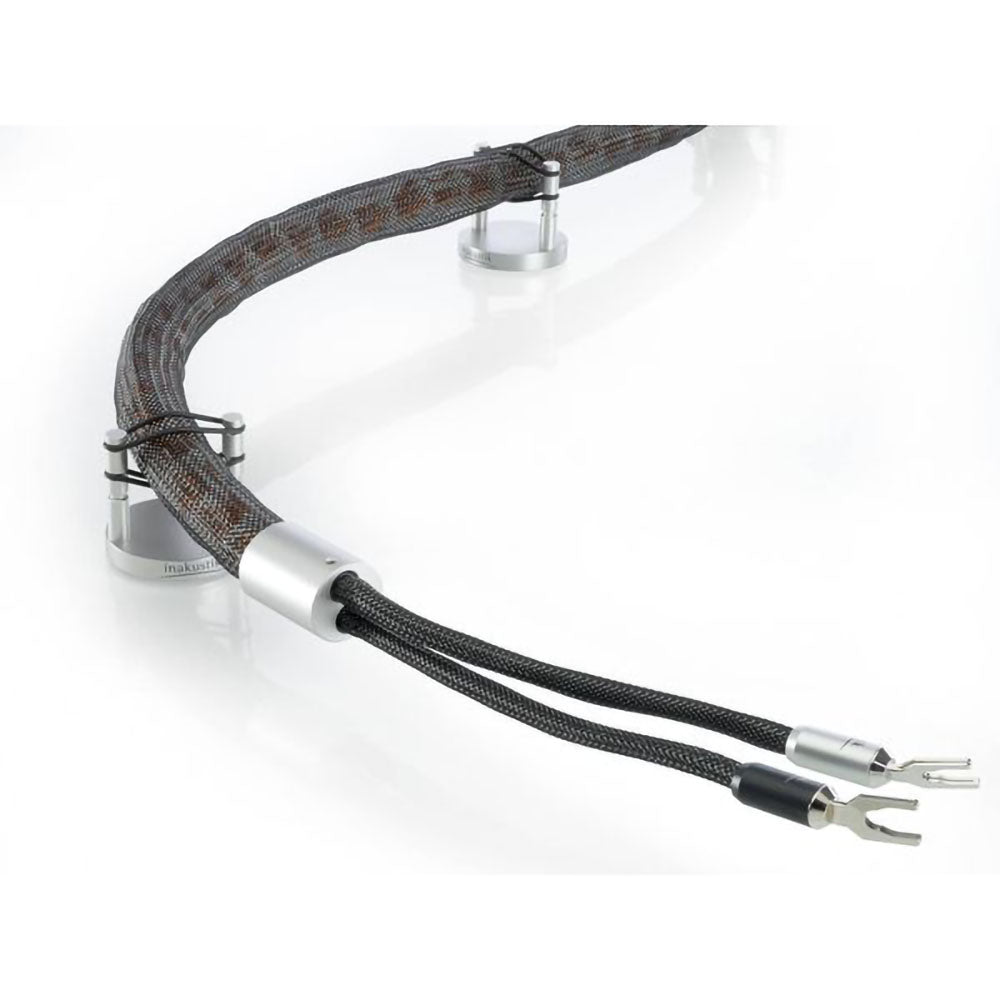
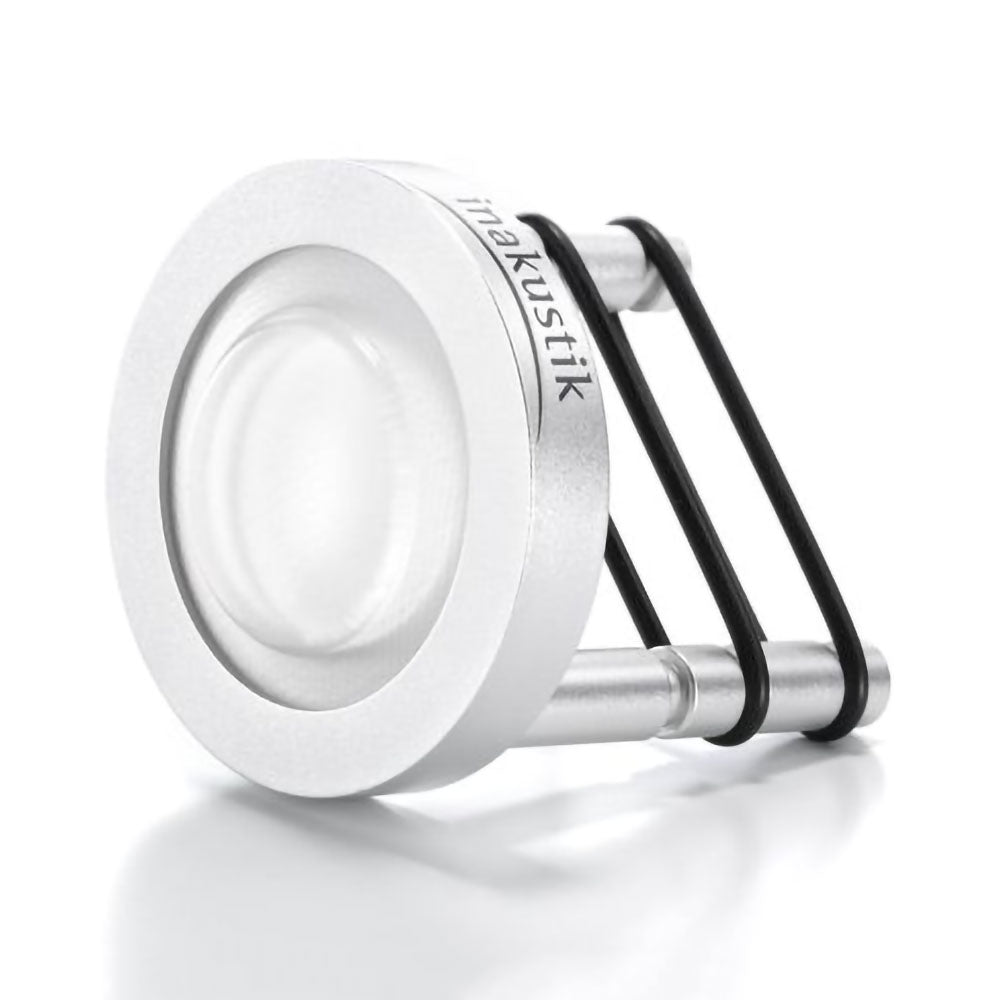
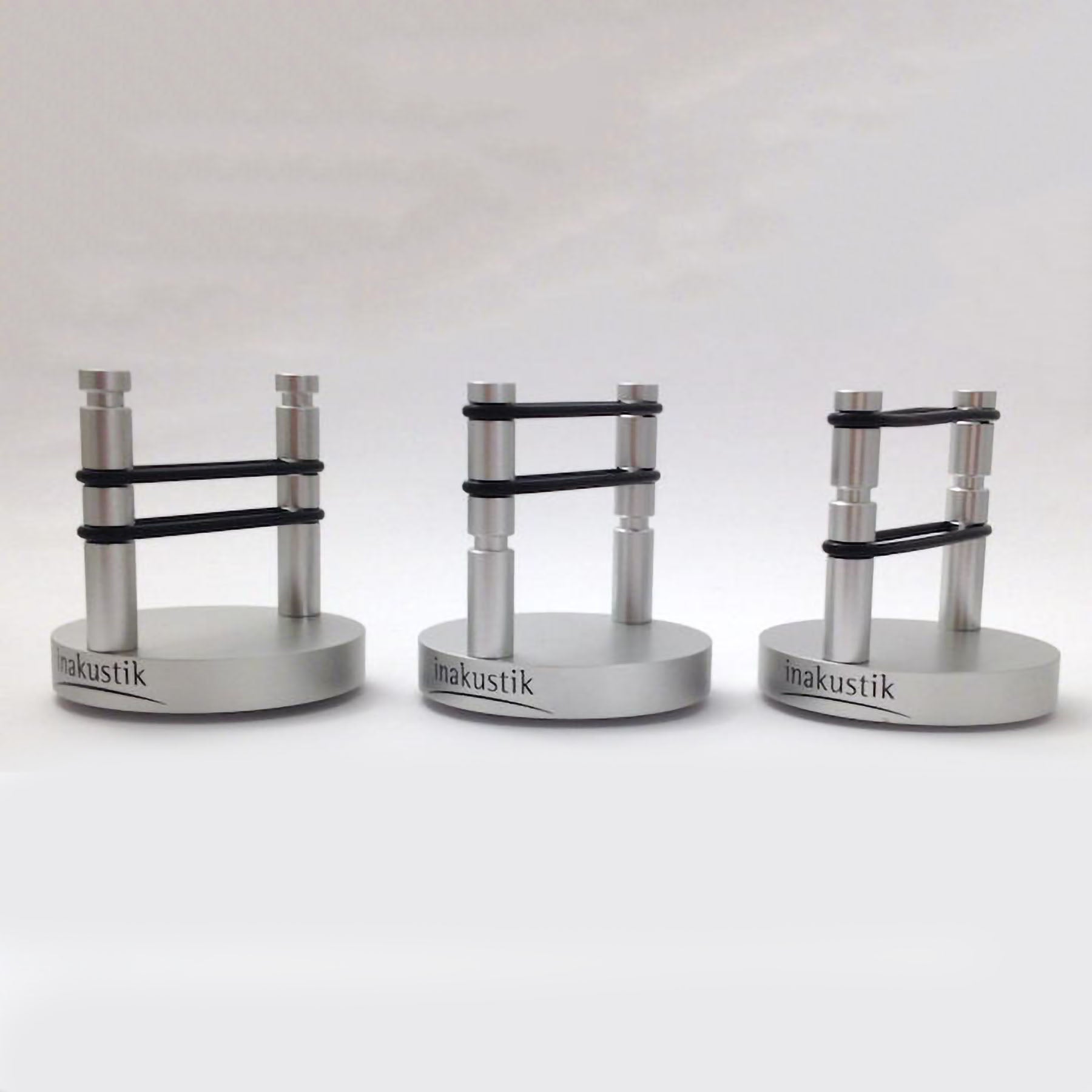
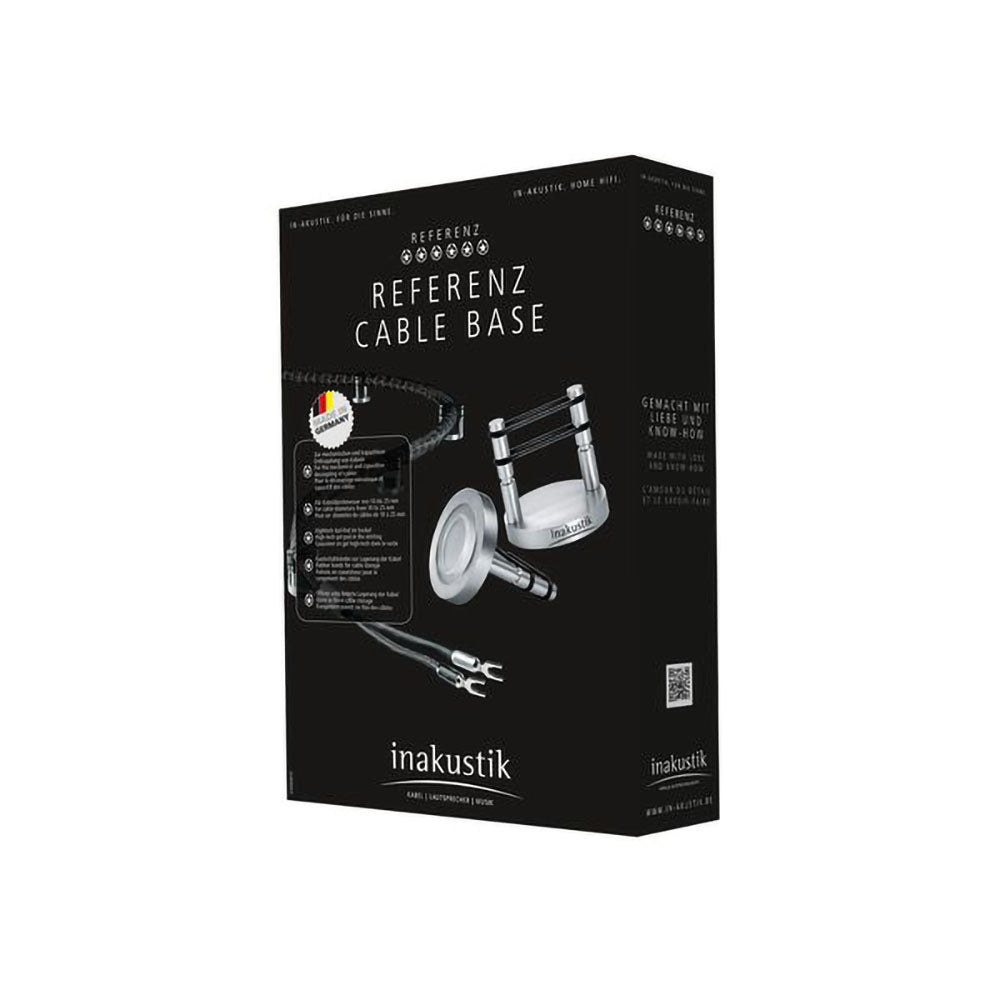
Inakustik Reference Cable Isolation Bases (set of 10)
Inakustik Reference Cable Isolation Bases (set of 10)
Silver
22 Saint Kilda Road
22 Saint Kilda Road
Suite 2.02
St Kilda VIC 3182
Australia

Inakustik
Reference Cable Base
- For mechanical and capacitive isolation of cables
- For cable diameters from 10 to 25 mm
- Hi-tech gel pad in the base
- Natural rubber strips for cable routing
- Open or fixed cable routing
High-end and hi-fi systems are a combination of high-precision and intricately made devices. Perfectly attuned to each other, they allow music to be played back in outstanding quality. To ensure that all components can function flawlessly, they need to be kept free of interference to the greatest extent possible, just like high precision measuring equipment does. The same also applies for the connection cables. Interference is caused in a number of different ways. Along with typical electromagnetic interference, which can, for example, be minimised by using good shielding, mechanical vibrations and shocks also have an impact on the playback quality. The Reference Cable Bases have been developed specifically for cables. Their base also contains a special gel, along with natural rubber strips, in which the cables can float freely. Along with absorbing the vibrations, the Reference Cable Bases also keep the cables at a distance to the floor. This reduces unwanted capacitances and reduces the effects on the electronics.

FEATURES
- Mechanical and capacitive isolation of the loudspeaker cables from the floor
- Mechanical and capacitive isolation of the RCA and XLR cables from the surfaces on which they are placed
- Mechanical and capacitive isolation of phono cables from the surfaces on which they are placed
- A particularly interesting way of using the Reference Cable Basis is also for isolating phono cables, as otherwise they would unavoidably transfer vibrations to the pick-up arm and therefore to the sensitive pick-up system.
- Diameter: 47mm Total height: 48mm Height levels: 25 / 33 / 44mm

INTERFERENCE
Interference is caused in a number of different ways. Along with typical electromagnetic interference, which can, for example, be minimised by using good shielding, mechanical vibrations and shocks also have an impact on the playback quality. Added to this are the effects of capacitive coupling between conductors and floors, which affect loudspeakers cables in particular. The conductors form unwanted capacitance, not just in interplay with each other, but also with other surfaces in the immediate surroundings. A good way to counteract this is by increasing the distance to the surfaces. As a rule, a few centimetres suffice.

STRUCTURE-BORNE NOISE
Vibrations are caused in different ways and they can be transmitted by structure-borne and air-borne noise. Structure-borne noise refers to vibrations that are exhibited by a body, such as the housing of a device. An example of this is the loudspeaker box. The membranes of the speakers are stimulated, making them vibrate. However, as the membranes feature a mechanical connection with the loudspeaker housing, they also transfer vibrations to the housing. The vibrations will be stronger or weaker according to the housing weight and the insulation. The vibrations are also transferred to the surface on which the loudspeakers are placed, this being the floor. Two things now occur. On the one hand, the floor emits some of the structure-borne energy as airborne sound (resulting in the typical droning noise), while on the other hand, the structure-borne noise is transferred, for example, to the cable placed on the floor. More about the effects of this later on.

AIRBORNE NOISE
Airborne sound refers to vibrations that are transferred through the air and that are audible for humans (with the exception of infrasound and ultrasound). The primary purpose of a hi-fi system is to produce sound. However, airborne noise not only stimulates the eardrum, but also acts on all other surfaces it reaches. This causes the walls, floors and other surfaces, and ultimately the hi-fi components and cables, to vibrate as well. The combination of airborne and structure-borne noise not only causes glasses in a display case to vibrate mechanically, but all components, including the cable used for a hi-fi signal chain, as well. Experiments have shown that the sound from the components and from the cables is impaired by the vibrations. One reason for this is, for example, the capacity values of components in relation to each other, which constantly change due to the vibrations. In order to minimise these so-called microphonic effects, the components must be isolated from the surface on which they are placed.This can be done by using the Reference High Tech Gel Absorber, for example, for appliances and loudspeakers. Their core contains a special gel, which physically converts the vibrations into heat.

REFERENZ CABLE BASES
The Reference Cable Bases have been developed specifically for cables. Their base also contains a special gel, along with natural rubber strips, in which the cables can float freely. Along with absorbing the vibrations, the Reference Cable Bases also keep the cables at a distance to the floor. This reduces unwanted capacitances and reduces the effects on the electronics.

FLEXIBLE USE
The Reference Cable Bases can be used flexibly. Along with different cable diameters and distances from the floor, you can also route the cable so that is it open or closed. OPEN CABLE ROUTING: When routed this way, the cable is only loosely placed on the rubber strip, and can be positioned at three different heights. CLOSED CABLE ROUTING: When routed this way, the cable is fixed in place from above and below by two rubber strips. The advantage is that the cable, on the one hand, does not slip from the base when exposed to minor movements, for example when aligning the loudspeaker, while on the other hand, the cable is fixed in a defined position



